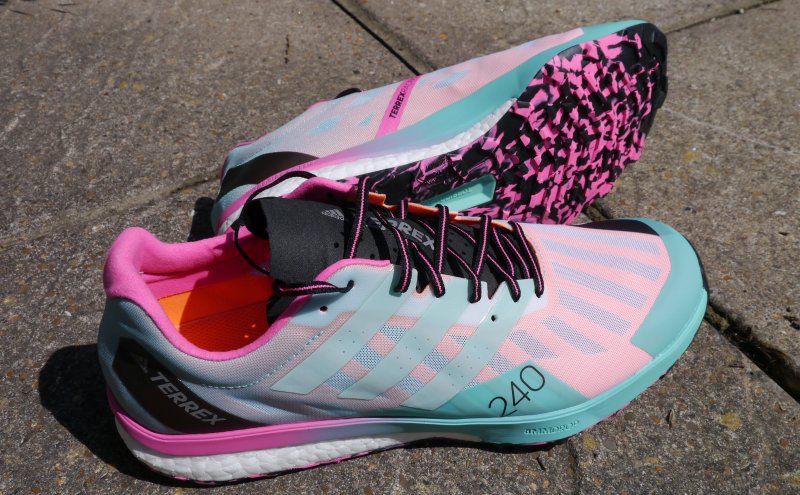I’ve done over a hundred a fifty miles in them, plus a 50K ultra race, so it’s time for an adidas Terrex Speed Ultra Review. I’ll describe who they are for, what they are for, how they are constructed and what they are like to run in. If you have any questions after reading, please ask in the comments.
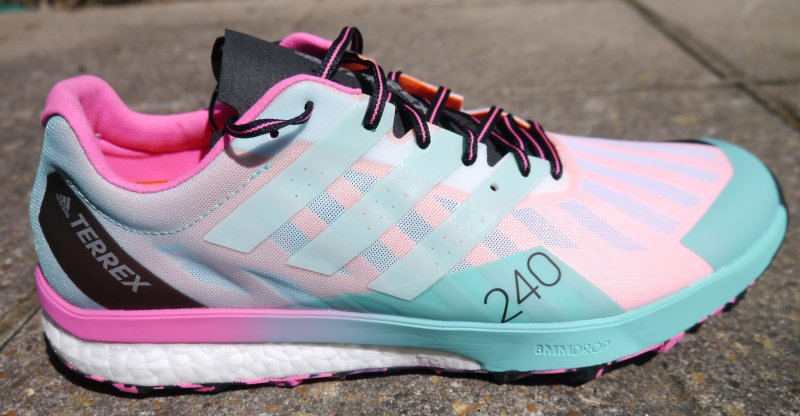
Who’s it for?
The adidas Terrex Speed Ultra reviewed here is for people that need a lightweight trail running shoe that still has excellent cushion and enough grip to make them more useful than a pair of road shoes on a long trail run. It’s not for people looking for a mud shoe. If you are looking for a shoe that can deal with road sections in a long trail run as well as a bit of muck on a drier trails, it’s a contender.
How’s it made?
The Terrex Speed Ultra has a lightweight, breathable upper on top of a mix of Lightstrike and Boost midsole.
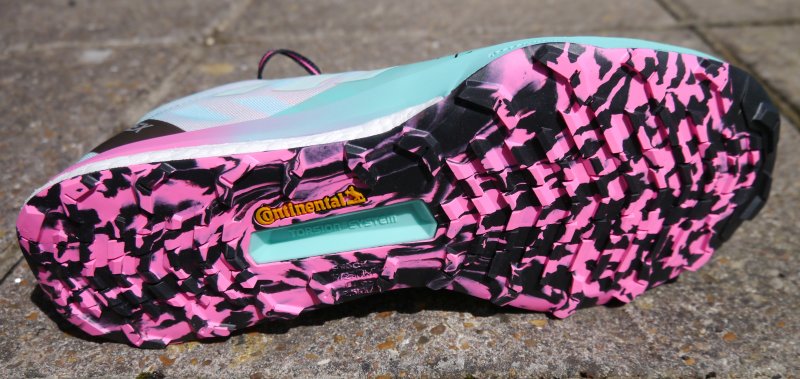
Starting with the outsole, it’s Continental rubber with some shallow lugs, designed for dry trails, soft dirt and very shallow mud.

The lugs cover the whole surface apart from a torsion system cut-out in the middle.

The adidas Terrex Speed Ultra midsole has bouncy boost foam in the heel with a lay of Lightstrike EVA on top. In the forefoot, it’s Lightstrike for the whole stack. This is the opposite of what happens in the Takumi Sen racing flat, where the forefoot has a mix of boost and EVA and the heel has EVA alone.
My only guess as to why the design of the Speed Ultra went this way around was for stability under the forefoot on technical terrain.
There is the smallest of rocker shape to the outsole, where’s there’s no real flat section, but I couldn’t go as far as saying it’s a rocker, and doesn’t feel in any way like that while running.
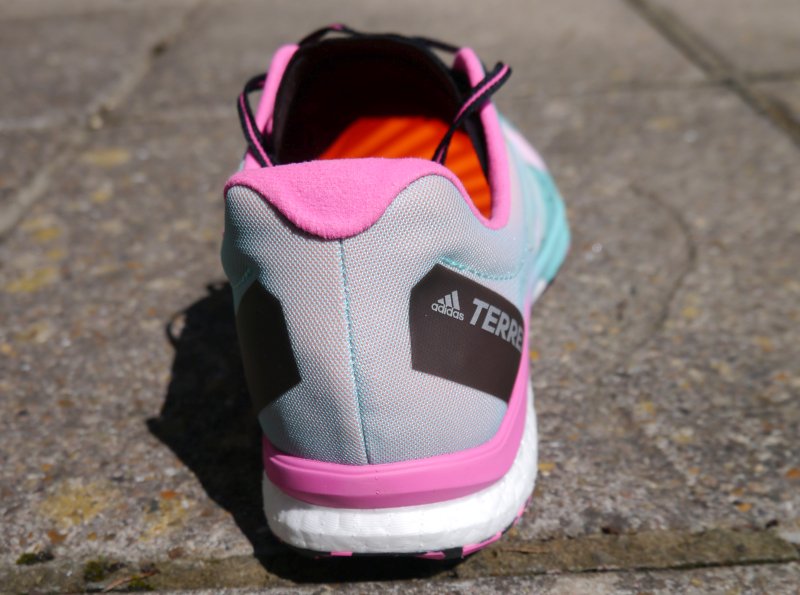
The heel is narrow, but has zero heel counter. If you land heavily on your heels on cambers, it’s not going to help you out and expects you land straight down on it for best results for heel style running.
There is a small amount of puffy padding around the ankle, being almost flush against the foot. It’s actually quite tricky to get the foot in without loosening off the laces each time, but once in place, it’s a great shape.

The upper is very thin and breathable, but somehow the reinforcement panels keep it from moving around, so it retains its shape very well.
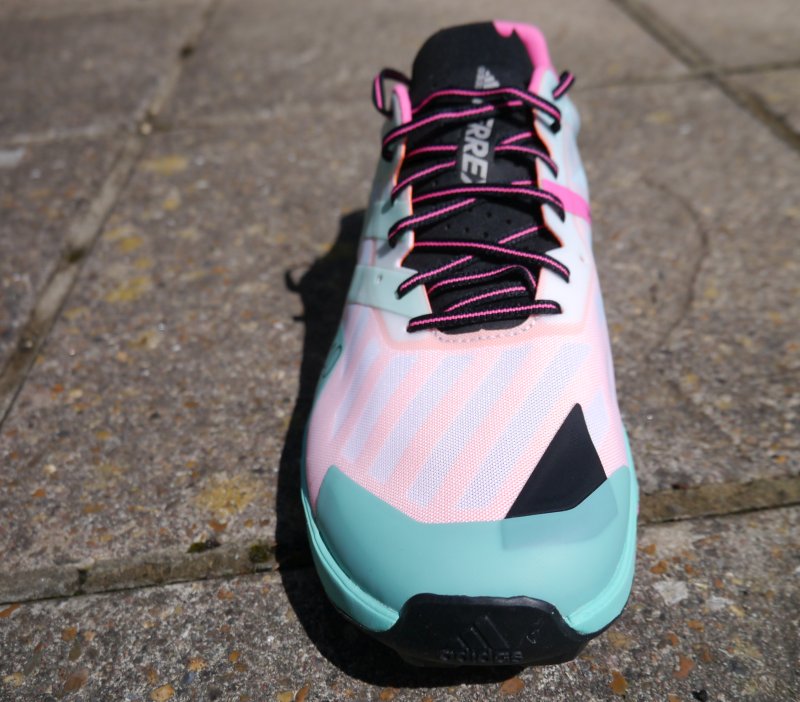
The forefoot has a thin rubber guard to give the toes half a chance from splashes and keep the upper from moving too much on the downhills.
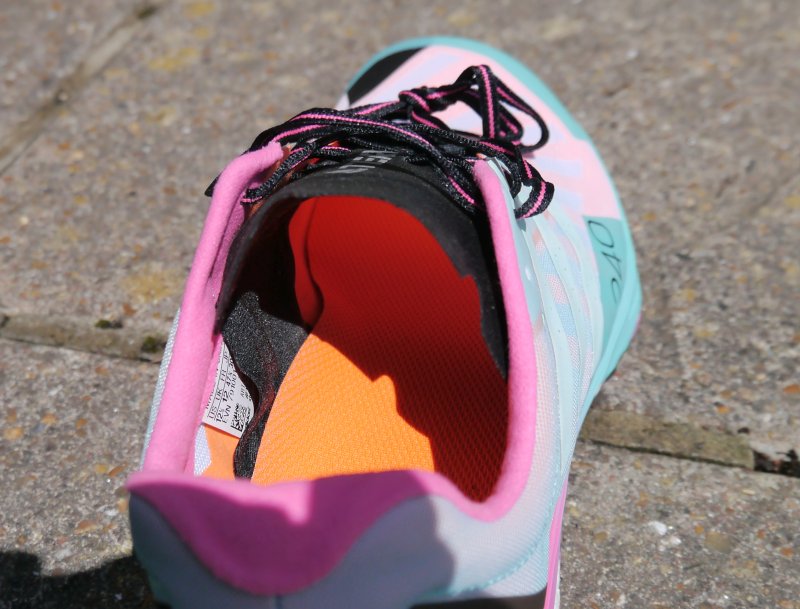
Inside, there’s a very small shape to the arch. Note that I don’t like shaped arches – the Hoka Speedgoat is about as much as I’ll endure, so the adidas Terrex shape is flat enough for me.
The tongue is quite thin, with a token padding above the arch, but quite rigid and includes a sock liner which helps keep debris at bay and keeps the foot in the right place on tougher terrain.
Size, Weight and Heel Drop
In most trainers, I wear a size 11UK or 11.5UK, but I tend to go up half a size in adidas and I went for a 12UK for the adidas Terrex Speed Ultra because they come out a tiny bit small. Similar to Takumi Sen or Adios if you’ve ever tried those.

The “240” emblazoned on the side of the shoe refers to the weight of the size 8. In my size 12UK, it came out at 305g, which is pretty light for a trail shoe with this much cushion.

The adidas Terrex Speed Ultra heel drop is 8mm. So it’s forgiving on the steeper uphills, but prefers a quicker cadence on the way down.
On The Run
First impressions were that it’s a snug shoe. I have narrow feet and there’s plenty of room for me to wiggle the toes, but people with wider feet might have to size up due to the midfoot sock liner.
Having boost in the heel of a trail shoe initially felt weird when walking around in the house. It’s quite a bouncy foam and most of my other trail shoes are firmer all over.
Stepping out of the door, I have a few minutes of road before I reach the trails. Immediately, I noticed how much grip there is on tarmac, dry or wet. The Continental outsole stays totally planted on the roads. So much so that, I’ve used it by choice a few times when I have to do road runs in the rain.
Reaching the trails and the goal of the Speed Ultra became clear – this shoe wants to go fast. Lightstrike can feel firm on roads, but on trails, for a forefoot style, it really wanted to pick up the pace, responding well to a high turnover. Landing on the heels was less exciting, with the boost foam happily absorbing some of the pounding and feeling more appropriate to the “Ultra” part of the name, feeling like you could plod along with a more relaxed landing. Certainly as you get tired towards the end of a longer run and mix in more heel with any midfoot or forefoot landing, perhaps on downhills, it does the job. It feels light too.
On very difficult terrain, like ruts, large stones or camber, the stack height reminds you that it’s not a super stable shoe. There’s no rock plate and it’s narrowed under the midfoot. Therefore, there were a few moments were it felt like I was about to throw my ankle, although some of the blame can go on how fast I wanted to run in the shoe all the time on the downhills. Importantly, the upper held on to me well enough to keep the ankle under control, allowing me time to absorb any potential ankle mishaps with the legs. On normal terrain, they were plenty stable enough.
In terms of intrusion, I never noticed the lack of rock plate. The stack is high enough to prevent stones from reaching the foot. Ground feel is reduced as you’d expect for a shoe aimed at ultra distance.
I’ve done several 2.5 hour trail runs, one of which was their first outing. After trying them on in the house, I was confident they would last the distance with my feet intact and I was right. No blisters. No hot-spots. It was a very steep run in places, requiring some walking too. Very little flat sections to speak of, so a tough test for a first run.
Although they felt like a fast shoe, I was quite happy pootling along in them on slower runs too.
I tried most surfaces. On wet chalk they hung on pretty well, with only a couple of small slips – a tough test that always scares me in most shoes. On deep mud, they were useless as you’d expect, since that’s not what they are designed for at all.
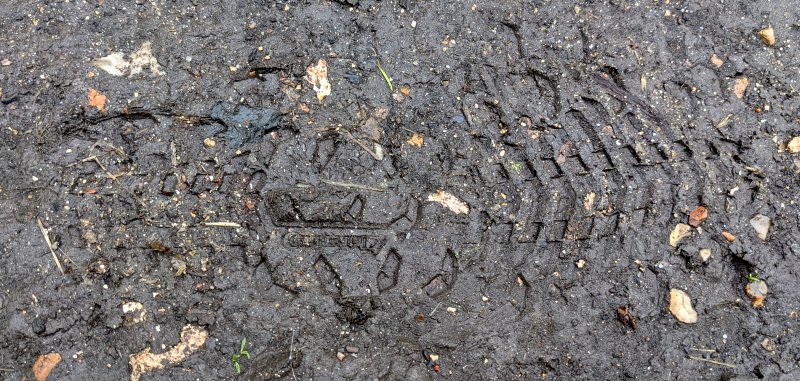
In shallow mud like in the pic above, they are great, giving confident cornering and direction changes around roots and rocks.
On wet or dry grass, flat or steep, they grip perfectly.
As you’d expect, they excel on hardpack, dirt tracks, dry chalk and gravel.
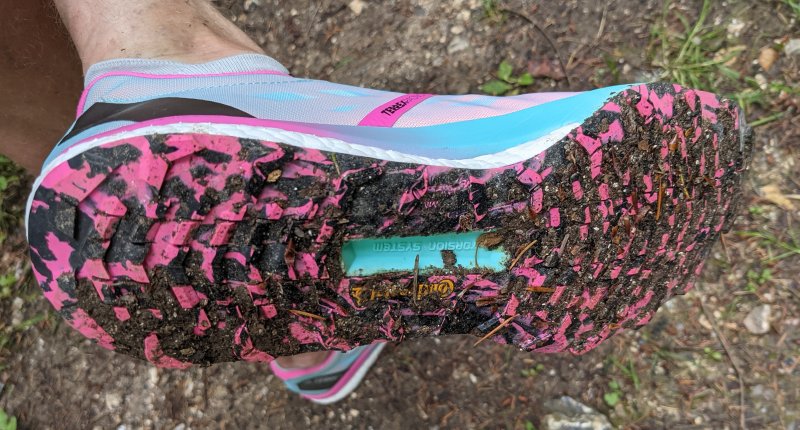
I bought these adidas Terrex Speed Ultra with the idea of using them for a 50 mile hill race. From what I’ve learned so far, I think they will do it. I’ve done similar in racing flats before and these have a lot more cushion than those. However, they aren’t like most super cushioned ultra shoes, so if you are used to those, you might see these as an excellent shoe for shorter, faster races like a trail half.
I used them for was a 10 mile fast pace thrash from Weymouth to Lulworth Cover along the South West Coastal Trail, including 2000 feet of elevation. It was hilarious the whole way and coped perfectly with everything that was thrown at it. I needed to do the laces up tighter for the steep downhills because it was gripping hard with confidence on that terrain.
I used them for the Winter Cross 50K Ultra, which was a mix of mud, deep mud, rivers of mud, muddy grass, road and road. The difficulty of the terrain meant I was out there for six hours.


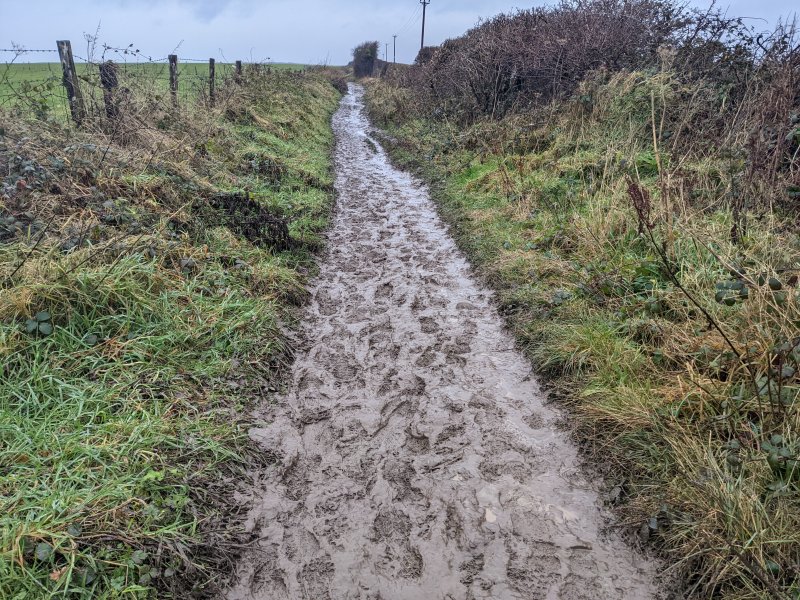
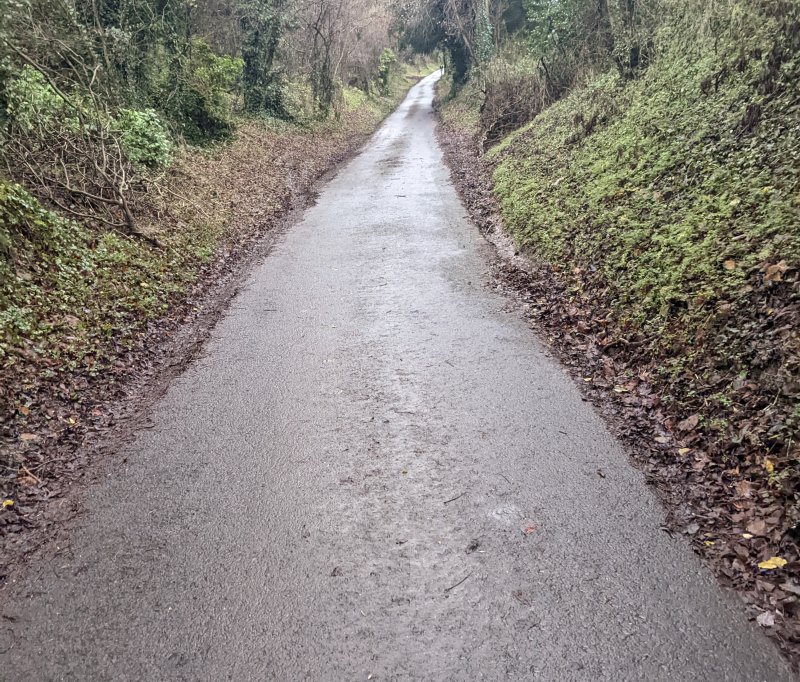
Zero sign of blisters or hot spots, comfy the whole way and also, even though my feet were often under water or under mud, only one bit of grit got in but I didn’t need to stop to remove it after it moved to the front and disappeared from feel.
Although the grip was lacking on some flatter sections, needing a gentle approach, anywhere that was a bit steeper was fine. There were quite long stretches of road, plus lots of mud on top of hard chalk, and I would not have been comfortable in shoes with huge lugs.
I aalso used them for the dry SDW50 Miler along the South Downs Way. No issues. Feet good at the end.
After 150+ miles, they are showing zero signs of wear, apart from a bit of lug wear, and I expect them to last. Big smiles all round from me.
Edit: These have now done 550 miles! The lugs on these adidas terrex speed ultra 240 have now worn down, so they are now dry weather shoes. I use them as road shoes often, and dry trails. They still feel great.
